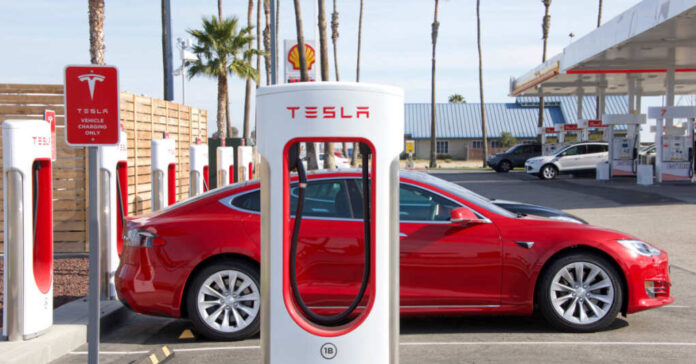
Ever since the start of the climate crisis hysteria back in the 1980s, various car manufacturers have tried a multitude of ways to get people around efficiently and lower our carbon footprint. From strange solar panel-covered cars to hydrogen, natural gas, and propane-fueled vehicles, they have done everything they can to get people away from gas and diesel.
With a boost coming in the form of a huge slap in the face from California emissions standards and new diesel regulations killing that segment, we have been left with little more than a neutered line of fossil fuel options. This helped push a huge pivot towards electric vehicle (EV) engineering in the late 1990s. Eventually, it led to Tesla’s founding in 2003 by two engineers, Martin Eberhard and Marc Tarpenning. Since then, the company has been sold to Elon Musk, who has made it the legendary giant it is.
The massive draw Tesla cultivated has inspired lawmakers to impose more regulations on consumers and essentially try to force the American public to go electric. While the Techking and his fresh automotive designs have continuously drawn people in, the sales are starting to slump. In 2021 Hertz placed an order for 100k Teslas but are now selling off a third of their fleet. Their 2022 commitment to buy 175k GM EVs is also widely reported to be on the ropes as well.
Running essentially on their own, Tesla is the first major EV-only company on the market, and their sales are starting to roll off. Traditionally gas and diesel rivals GM, Ford, and Stellantis (aka Fiat Chrysler) have been suffering significantly more trying to sell them. With the cost of retrofitting garages and the frustration of finding charging stations, the average American consumer has started passing them up. Even selling them at a massive loss (Ford loses $36 per EV sold), people aren’t willing to take on the costs not included with the sticker price.
It’s not just the cost of outfitting the garage or the back of the house with a charging station; it’s finding one that actually works as they pray to find it at the mall. Per a recent piece from JD Power, 21% of public-use vehicle charging stations don’t work. While charging during inclement weather isn’t a problem due to insulation and sensors, most public charging stations are uncovered. This leaves people exposed to the elements while plugging in and leaves the car baking in the sun as it charges.
Then, there’s the cost of upkeep when something goes wrong due to a bad charger or a battery dropping a cell. While a traditional automaker will sell you a new crankshaft, alternator, or valve cover, Tesla will only sell specific parts to the public. Being forced to go through Tesla directly (less you void that warranty), the option of saving money on third-market parts or an un-sanctioned mechanic is gone too.
Of the companies who have pushed to get into the EV market, the only one who did so with some reluctance is remained successful with their sales has been Toyota.
By avoiding the massive rush to copy Tesla as the big three did, they instead focused on the hybrid. Using an electric-only motor at low speeds or cruising at slow speeds, the gas engine kicks in when you need full power or get over a certain mph. This means substantially better fuel economy and a longer life in between major services. However, they still have the battery problems EVs have, have a more complex engine, and aren’t available in a V8 or diesel option.
EVs simply aren’t as great as they were once thought to be. While Tesla shook the auto industry up, they aren’t the be-all and end-all for advancements in EV technology. Their stripped-down and basic interiors leave a lot to desire, as do the cheap materials. Recently launching the Cybertruck and bringing back an all-new Roadster (ETA 2026), they are trying to hang in there. It could be a case of “too little, too late,” as it looks like those who are willing to go electric have already jumped over.






